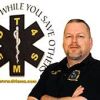There is no denying the fact that EMS professionals deal with violence on the job. So the question becomes, what do you do you prepare for it? When faced with a violent encounter, I guarantee staff will respond, but how they respond will be based on their training — or lack thereof.
When dealing with violence on the job, those in EMS, firefighters on an EMS call, and emergency department nurses for that matter, are in a unique environment. Unlike any other person placed in a perceived self-defense situation, we have to recognize, in a split-second, whether we are dealing with a person who is really trying to harm us or not.
For EMS to truly deal with what we face on the job, we must have seamless training that prepares us for battle in four specific areas: our minds, the street, the media and the courtroom.
1. Get inside your head
Prior to any physical skill, you need to have the critical thinking skills to understand the difference between a true medical/trauma patient (who may touch or attempt to touch with no real intent to harm) and an actual attacker (who may be under the influence of drugs or alcohol, and does intend harm).
Responding to one like the other may have dire consequences in terms of how the definition of reasonable, duty-to-act and patient-abandonment laws apply to the violent encounter. Mental preparation — which I’ll further discuss in my next article — is just as important as any physical skill you may possess.
2. Fight right
The actual application of a physical skill is what most people think of when discussing self-defense. When it comes to the battle of the street, consider moves that more often will allow you to escape the violent encounter.
Don’t choose a skill designed for law enforcement, which usually involves using some sort of pain compliance to obtain control. You must be wary of martial arts or fighting techniques designed to “win a fight” by some sort of finishing move. Proper training teaches a provider the difference between custody versus control, as well as what a “win” entails when using a physical skill during a use-of-force situation on the job.
3. Meet the press
Training must prepare you to recognize that you can win the physical battle, only to lose in a court of public opinion. Winning the battle of the media is accomplished by having good customer service as your basis for all actions.
Practice having a sound set of verbal and physical skills that, if caught on camera, always appear non-aggressive in nature. Reporting all criminal assaults to supervisors and law enforcement can also help us win the battle of the media by raising awareness of the frequency of events.
4. Justice shall be served
The battle of the courtroom is won by preparation and good practice in the other areas. When preparing your mind, you learn what is reasonable in the use of force for self-defense. Many commenters on social media have said they would use a specific tool (like an O2 bottle) to handle various self-defense situations on the job.
While the choice of a tool may be required at times, the selection of the tool must be based on the totality of the circumstances and must be “reasonable.” Training should give staff an understanding of which force options fall into this category.
Reporting incidents of true criminal assaults to supervisors and law enforcement also not only prepares us for the battle of the media, but musters prosecutors and judges to our side as well, and alerts many of them to the frequency of the violent acts we face.
Now, penalty is not protection — but it proves there is a problem. Many states have toughened up on penalties for those who assault healthcare workers on the job.
Proper documentation of the violent encounter also helps in the courtroom. Staff receives specific training in other areas requiring documentation on the job, and documenting the violent encounter should be no different.
Whatever training system you pursue, research it prior to spending any money. Decide if the training was designed for what you or your staff really needs, and ensure it covers all four battles of the mind, street, media and courtroom — and not just some fancy techniques.
This article, originally published on March 17, 2014, has been updated



